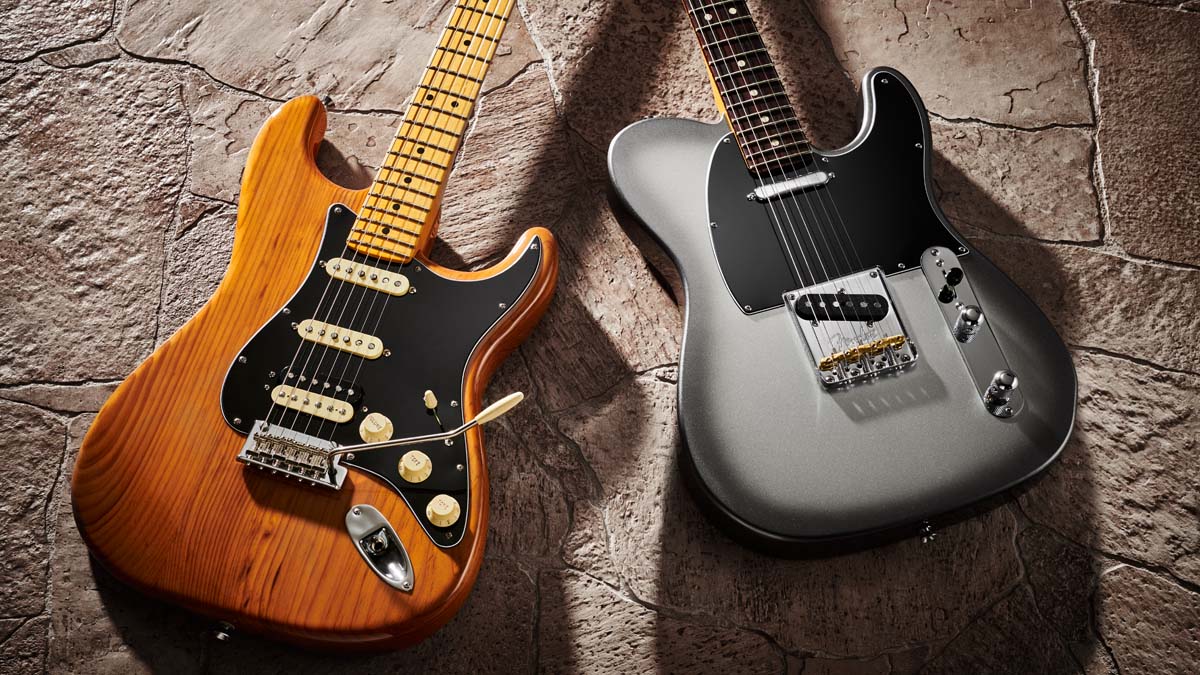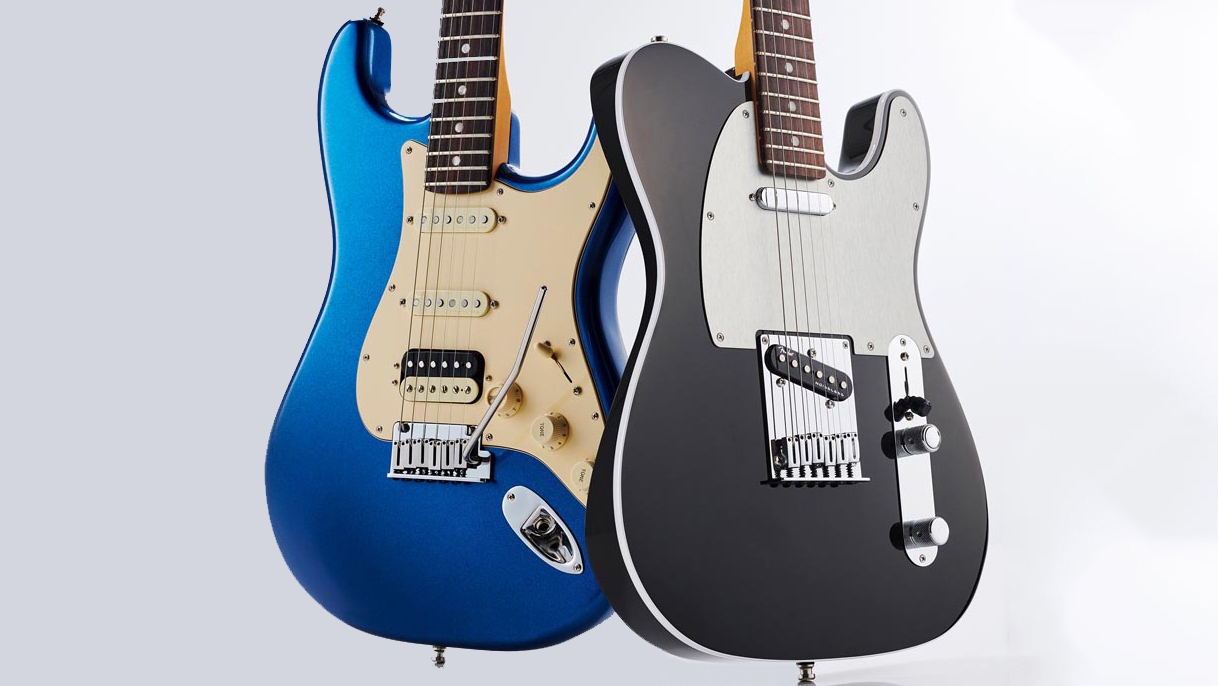Guitar World Verdict
A modest refresh for the Am Pro line, but nonetheless well judged, and these remain high-performance options that are priced fairly for your average jobbing guitarist. The Tele remains a great workhorse while the Strat is very difficult to put down.
Pros
- +
The subtle changes make a noticeable difference.
- +
Very neat new bridge.
- +
Tele's push-push switch series pickup link is very welcome.
- +
A great middle-ground Telecaster.
- +
Strat has a superb neck feel and setup.
- +
Excellent musical tools with relatively modern voicings.
Cons
- -
Notching those Tele saddles wouldn’t go amiss.
- -
Not everyone will get the roasted pine’s appearance.
You can trust Guitar World
Time flies and it only seems like yesterday we were writing about the new American Professional guitars, a reimagined overhaul of the previous long-running American Standard that produced some of the best playing and sounding Fender electric guitars – which we’d not hesitate to recommend to readers and friends alike.
In some ways, then, it’s a bit of a surprise that Fender has now replaced that line with these Mk II versions. If you’re expecting a completely new operating system, you’ll be disappointed: the American Professional II is more like a firmware upgrade.
Perhaps that’s a little harsh, though, because there are numerous features that differentiate II from I. Obviously, there are different colours, some of which might be quite polarising, particularly to those of us who’ve grown up with the classic and custom colour hues.
More fundamentally, lightweight ash is now hard to source – certainly in the quantities that Fender consumes – and is replaced by roasted pine as used right back at the start of the Fender story (although it wasn’t roasted back then) and for various limited runs over the years.
Fender is playing catch-up a little here because pine is quite popular in the modding and DIY partscaster world, not to mention among some elevated boutique makers.
Fender tells us that the timber offers a very focused bright tone and that the roasting stabilises the wood and can make it a little lighter. We then get a raft of refinements to continue the already refined Am Pro vibe.
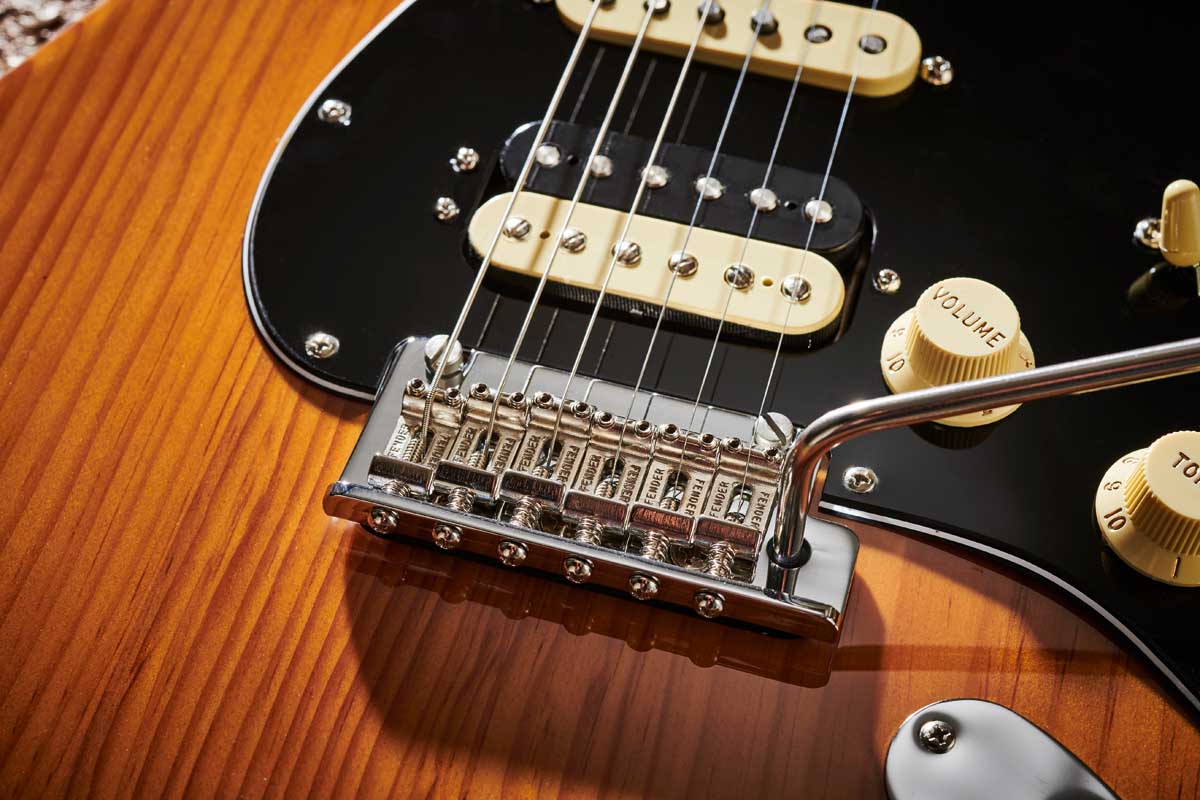
The contoured heel, for example, is hardly new, but it knocks the old square edge off the treble side of the heel, something Leo would have probably done back in the day had he realised there was money to be made noodling around in those high-fret positions.
Fender has sensibly retained the Micro-Tilt neck pitch adjustment here, too. The other subtler changes are to the necks. Along with a ‘smoother’ satin back finish – coined ‘Super-Natural’ – and a rich but not overdone amber tint, there’s a heavier rolling to the fingerboard edges.
The deep C profile of the Am Pro I is retained, but all in, along with the narrow/tall wire on that everyman 241mm (9.5inch) radius, it’s hard to think how Fender could have improved things further.
The range of models, at least the initial releases, tick all the best-selling boxes, too: Strat, Tele, Strat HSS, Tele Deluxe (now with a larger 70s Strat-style headstock) and Jazzmaster. There’s no Strat HH this time around; the launch range here seems very focused on the big-hitters. And why not?
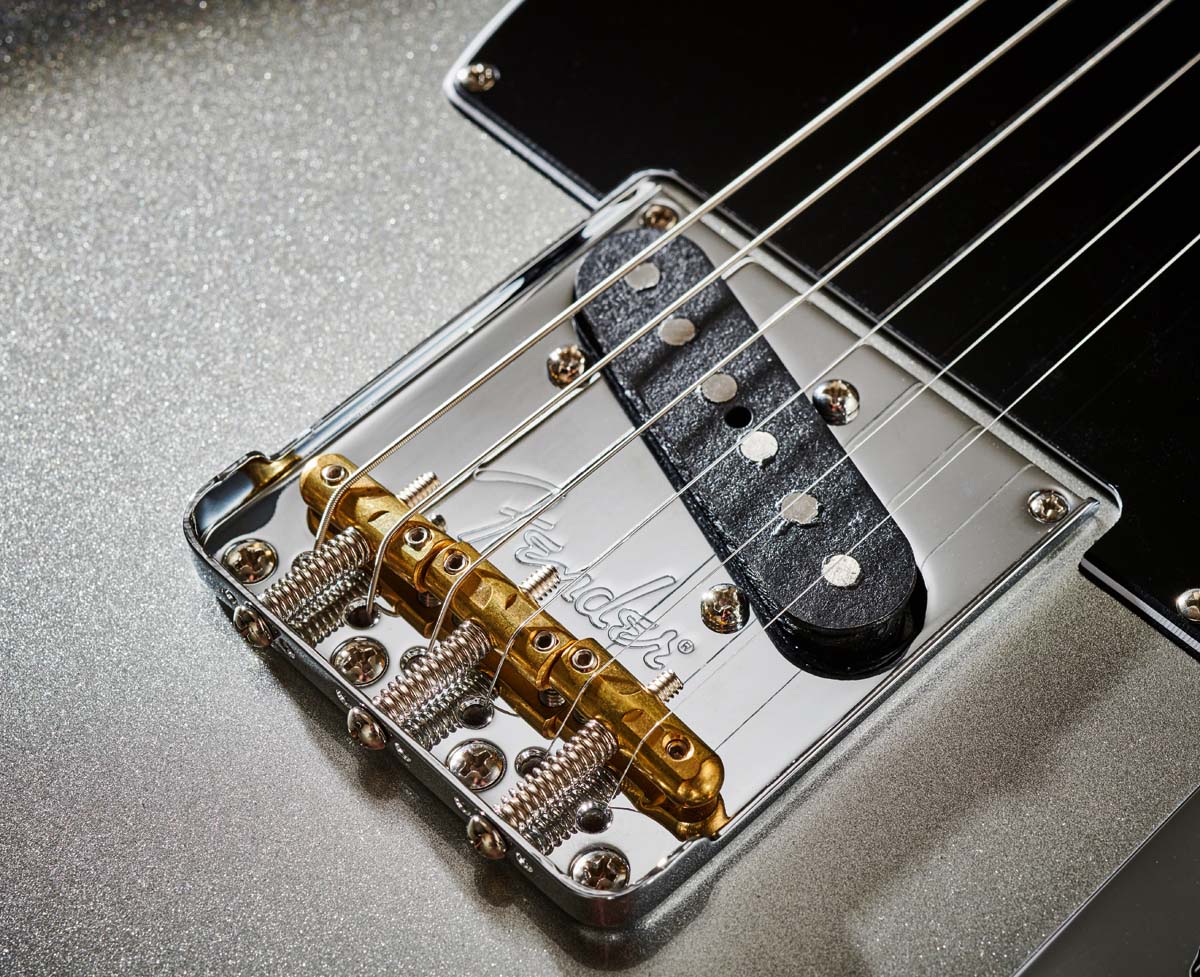
American Pro II Stratocaster HSS
As with ash, which was only used on specific colours, here pine is employed for the Sienna Sunburst and Roasted Pine, which most of us would simply call natural because Fender tells us the finish here is basically just clear coats over a sanding sealer.
The roasting process clearly deepens the colour, creating a very rustic furniture vibe that was all the rage in some homes back in the 70s. We’re suckers for heavier contours that enhance the sculptural beauty of the best guitar design ever. Here, that top body edge is a little thick.
As for hardware, it’s pretty much only the staggered-height modern tuners that remain completely untouched. The two-post bridge now boasts a cold-rolled steel block that, says Fender, “increases sustain, clarity and high-end sparkle”.

Fender’s Justin Norvell elaborates: “The previous blocks were cast. These are usually resin impregnated, which makes it musically less like a bell when you hit it. It’s got mass but doesn’t have the same resonance or musicality.
“We were actually using an improved style of cast block that was copper-infused instead of resin, so it was homogenous metal all the way through, but it was still a sintered block. Here, we still have the chamfering for extra travel, but it’s milled out of cold rolled steel, which has long been what the aftermarket people with their upgraded hardware use.
“It’s what we do on American Original and in the Custom Shop: it’s the original recipe that Leo was using. So, again, it’s just another tweak that adds musicality and enhances tone.”
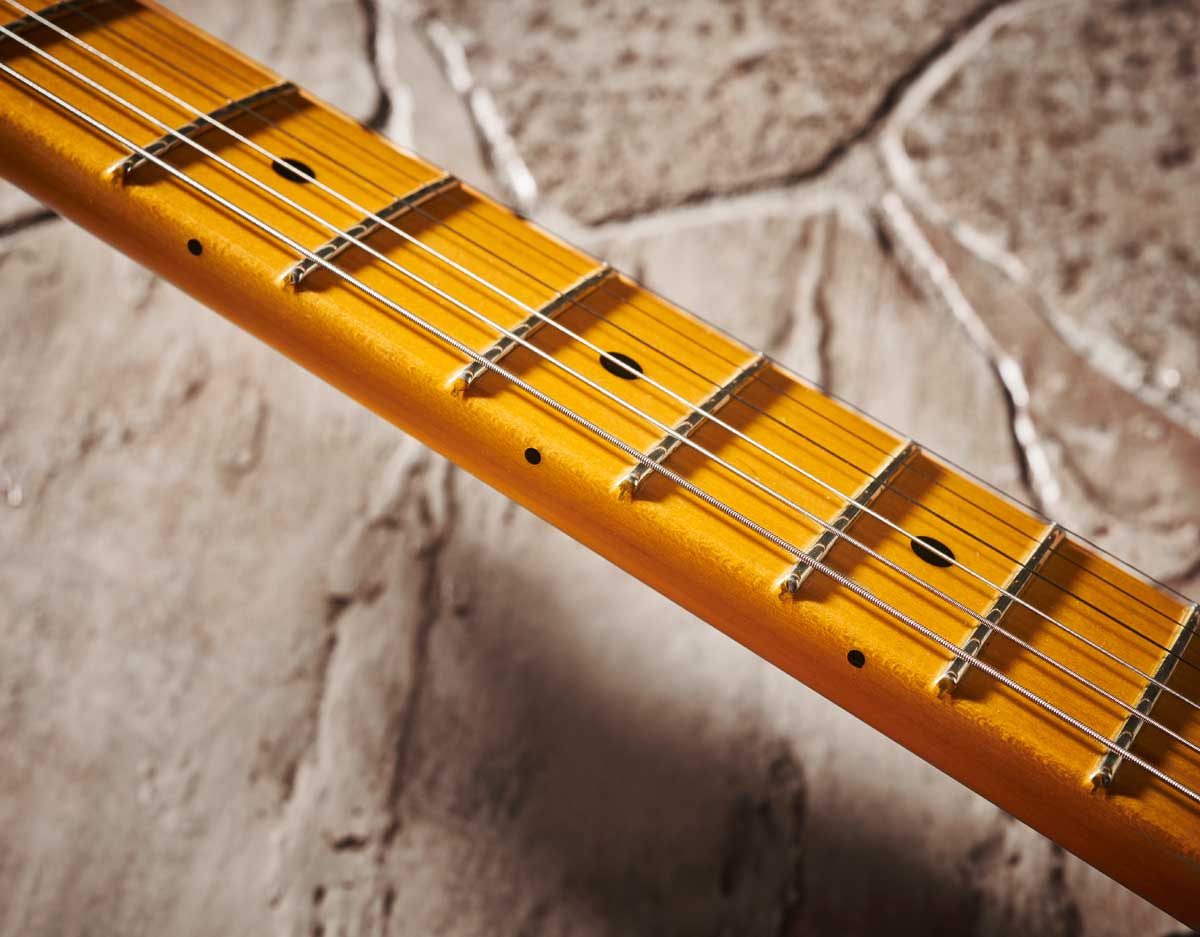
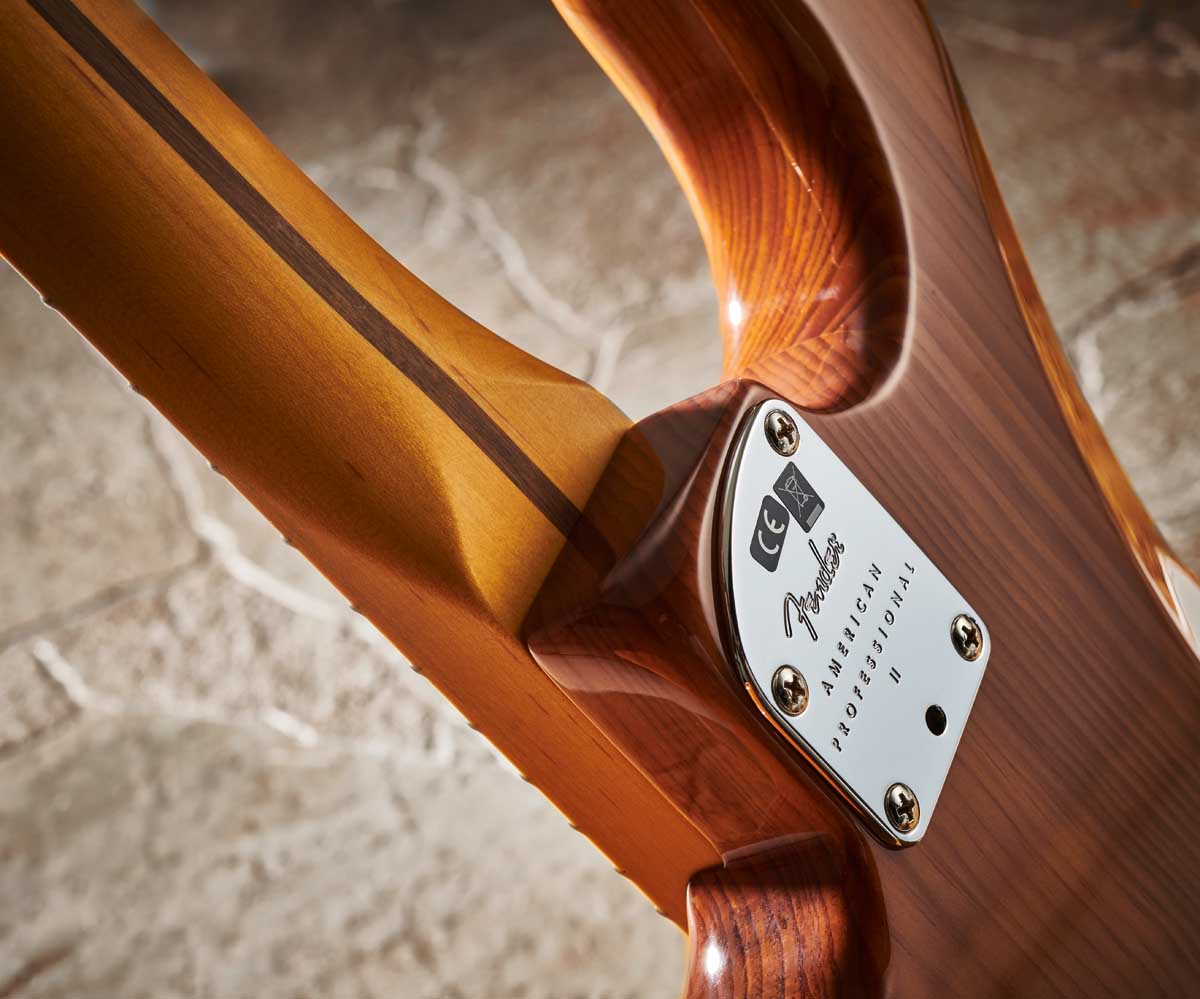
A major part of the first Am Pros were the mixed-magnet V-Mod pickups (see Mods For Rockers, later in this feature). Here we have V-Mod IIs: the “Stratocaster single-coil pickups are more articulate than ever while retaining bell-like chime and warmth”, says Fender.
The DoubleTap humbucker – again upgraded to II status – first appeared on the American Performer range and the bridge facing cream coil cleverly helps to ape the classic three-single-coil look, at least from a distance.
Each Am Pro II also has a new-to-Fender push-push switch on the tone control. Again, far from new, it switches the full humbucker to its single-coil mode, although it’s actually a little trickier than that.
American Pro II Telecaster
One of the new colours, Mercury, is shown off here on this muted-down Silver Burst Tele over its alder body – which pulls back the usual black edge to a dark grey pewter hue. It certainly looks very stage-aimed and showy. Again, this refresh also includes a smattering of new hardware and electronics.
Most notably we have an updated bridge that uses a bridge plate with cut-down side walls. It can be top-loaded as well as through-strung, while the outer two saddles are slightly longer and have domed ‘bullet’ ends. The height adjustment screws are nicely buried – a great advantage of the Micro-Tilt – and the saddles are compensated as before. So, again, we have V-Mod II pickups.
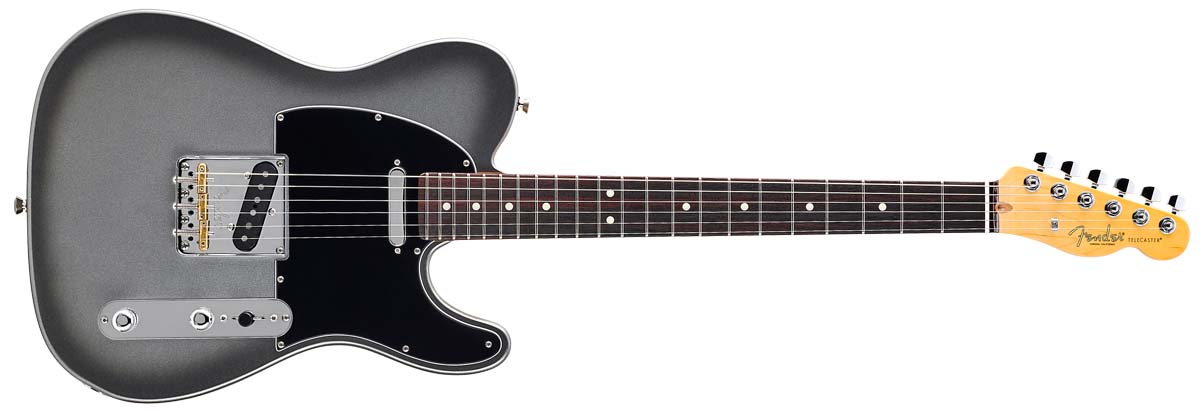
The bridge has flush mount poles, while the push-push switch on the tone control voices both pickups in series when it is pushed up and when the three-way selector is in middle position. Like the Strat we get the string tree from the Ultra (a pretty minor point) and we have dome-topped knurled knobs, not the flat-tops of the previous series.

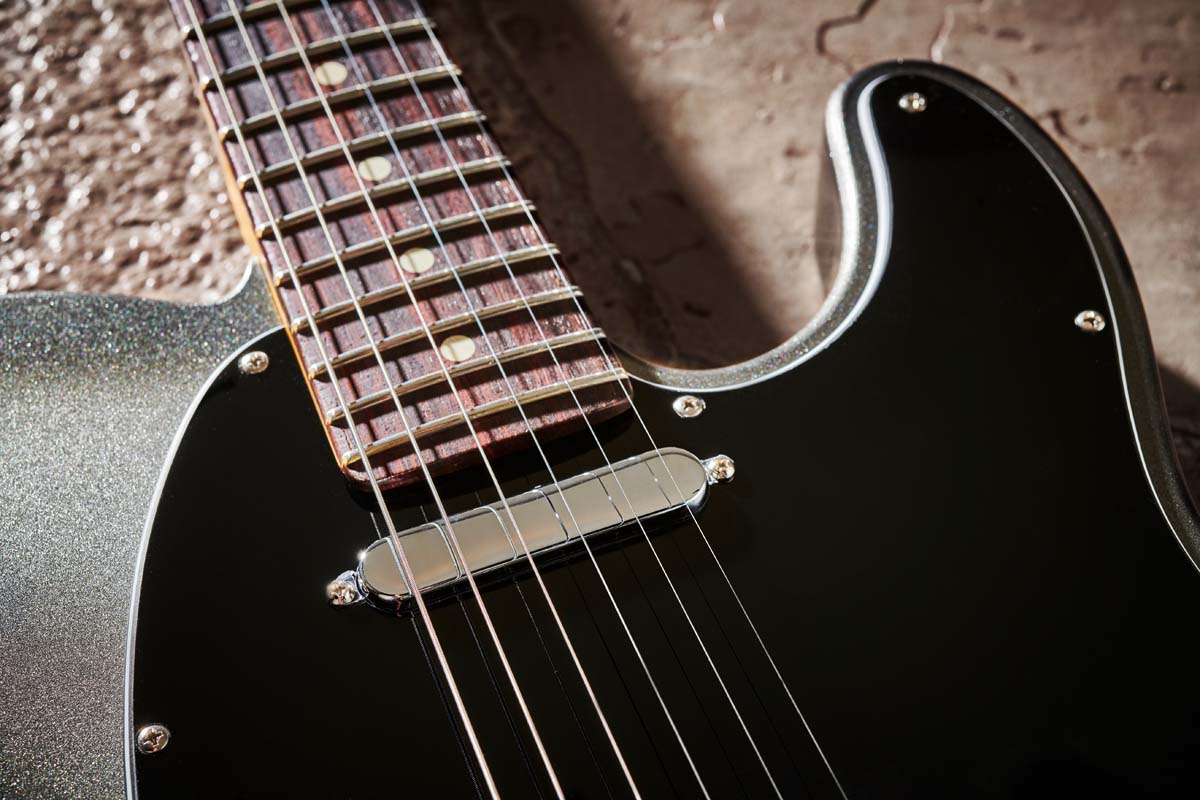
Feels & Sounds
Both guitars come in pretty similar weight wise, neither feather-light nor far from heavy. The necks’ ‘deep C’ profile is retained from the previous series, spec’d at 0.820 inches (20.8mm) at the 1st fret and 0.920 inches (23.4mm) by the 12th – pretty much the exact depths we measured.
For the record, the Tele’s neck is slab-sawn; the Strat’s one-piece maple neck/fingerboard is rift-sawn. It’s a very everyman shape, not too thin, not to thick, and along with that standard radius and narrow/tall frets there’s little change over the previous models.
The highs do seem a little more rounded here and there’s no shortage of midrange bite, which really pushes the Tele-ness to the fore on the bridge pickup
However, that increased fingerboard edge rolling is welcome and the radiusing seems slightly more on the maple fingerboard face of the Strat than the separate rosewood fingerboard of the Tele.
Is this ‘Super-Natural’ finish to the neck back a game-changer or even noticeably different from the original American Professional? No, but it does feel super smooth – this is good craft.
As is the setup, which pairs 0.009s with string heights on both treble and bass sides at the 12th fret of a shade over 1.5mm. First impressions of the Strat played clean is that there’s plenty of breathy crispness.
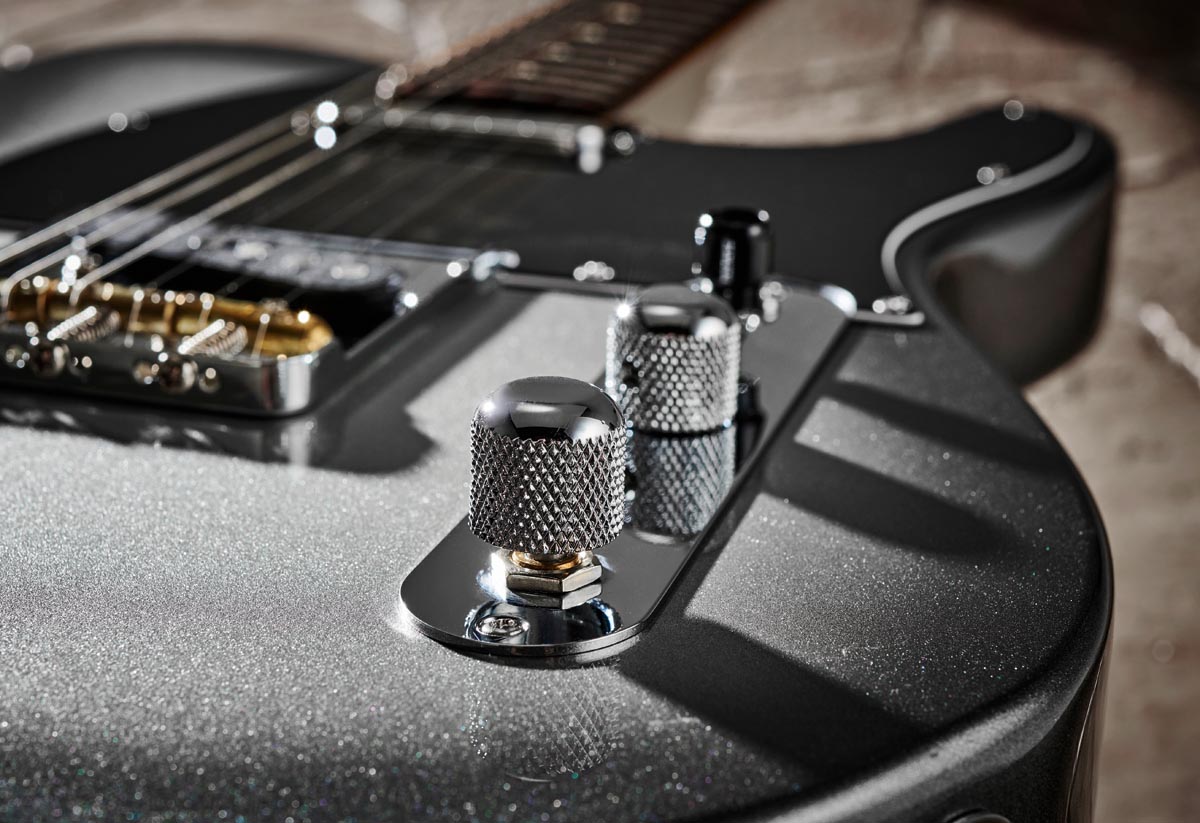
There’s no doubt what you’re listening to, but we’re reaching for the tones to pull them back whereas our reference Strats remain fully open. Not for the first time both tones here act like a ‘decade’ control: fully open there’s that almost post-EQ zing; backed off we get to more of those classic ‘analogue’ sounds.
As you’d expect, there’s no shortage of fast attack and the voice is pretty vibrant. The push-push switch voices the screw coil of the bridge humbucker, which matches the response from the single coils rather well. In full ’bucker mode it’s well balanced and certainly not over thick, a welcome gear change with a little more power.
Again, pulling back the tone here smooths out the quite strident attack and while the treble bleed circuits really keep things pristine, as you pull the volume back, many of us like that softening of a non-treble bleed. Like so many guitars, the key here is to use those tone controls. Keeping things pretty clean, the Tele works its magic, more strident and steely.
The neck pickup is far from rounded or muted, though; it really isn’t a million miles away from the Strat’s neck in terms of voicing just with a subtler smoother attack. The highs do seem a little more rounded here and there’s no shortage of midrange bite, which really pushes the Tele-ness to the fore on the bridge pickup.
The series sound is certainly thicker – the biggest sound here – and humbucker-like, with the well-voiced treble bleed on the volume. Pulling it back retains clarity but cleans things up, a sort of ‘home’ sound we’d suspect for many who need a deeper, wider voice than you’ll usually find on a Tele.
Again, using both volume and tone really pull out the guitar’s potential, even though, oddly, it took a while to settle, despite some pretty heavy string stretching. The well tried-and-tested Strat vibrato has a light, responsive feel with a pretty standard range of around a semitone up-bend on the high E and just over a tone on the G.
Stability for light use is excellent, although as with any brand-new guitar there’s a sense that it all needs to settle in a little. The push-fit arm is a very snug fit, making subtle shimmers very responsive. The more we played this Strat, the more we liked it – and the Tele, too.
Complaints? For all the effort that’s gone into the new Tele bridge, at setup or even post-purchase, notching the saddles wouldn’t go amiss as the strings can drift making the string spacing slightly uneven. Mind you, we’ve put up with that for years. There’s very little not to like here.
Verdict
Is roasted pine the new ash? Impossible to say on the evidence of a single guitar, but listening to this Strat in comparison with both alder and light ash references, it’s definitely in the right ballpark and perhaps sits between the two.
Obviously, you’re not just hearing a body wood, but what we’re hearing overall is extremely good. The pine does look different: we are so used to ash under blonde finishes or just natural that anything that looks different will always have its detractors.
With a couple of minor exceptions, it’s difficult to see how Fender could have improved these further
Despite the high-gloss finish, there’s a rather rustic vibe here that not everyone will enjoy. The Tele looks more showy and just expands on the first version in both feel and sounds and, with a couple of minor exceptions, it’s difficult to see how Fender could have improved these further.
They do feel like subtly modded versions of the first range with added attention to feel and detail. We’re big fans of the first American Pros and these II versions are simply nicely polished, very everyman instruments with colossal appeal to players everywhere. A superb job.
Specs
Fender American Professional II Telecaster
- PRICE: $1,499 / £1,599 (inc case)
- ORIGIN: USA
- TYPE: Single-cutaway solidbody electric
- BODY: Alder
- NECK: Maple, modern ‘deep C’ profile, bolt-on
- SCALE LENGTH: 648mm (25.5”)
- NUT/WIDTH: Bone/43.25mm
- FINGERBOARD: Rosewood, white dot markers, 241mm (9.5”) radius
- FRETS: 22, narrow tall
- HARDWARE: Nickel/chromed-plated strings-through-body or top-load Tele bridge with three compensated brass ‘bullet’ saddles and six-screw mounting, Fender standard cast/sealed staggered tuners
- STRING SPACING, BRIDGE: 55mm
- ELECTRICS: 2x Fender V-Mod II single coil Tele pickups, 3-position lever pickup selector switch, master volume (with treble bleed) and master tone with knurled dome-top knobs
- WEIGHT (kg/lb): 3.65/8.03
- OPTIONS: See ‘Colours & Woods’ box
- RANGE OPTIONS: The roasted pine-bodied Telecaster costs $1,549 / £1,649, the same price as the new Tele Deluxe
- LEFT-HANDERS: We can expect a left-handed Strat, Tele and Jazzmaster early 2021
- FINISHES: Mercury (as reviewed). See ‘Colours & Woods’. Gloss urethane body and headstock face, ‘Super-Natural’ satin urethane neck back’
Fender American Professional II Stratocaster HSS
- PRICE: $1,649 / £1,649 (inc case)
- ORIGIN: USA
- TYPE: Offset double-cutaway solidbody electric
- BODY: Roasted pine
- NECK: Maple, modern ‘deep C’ profile, bolt-on
- SCALE LENGTH: 648mm (25.5”)
- NUT/WIDTH: Bone/43.2mm
- FINGERBOARD: Maple, black dot markers, 241mm (9.5”) radius
- FRETS: 22, narrow tall
- HARDWARE: Nickel/chromed-plated 2-point synchronized vibrato with bent steel saddles and pop-in arm and cold-rolled steel block, Fender Standard cast/sealed staggered tuners
- STRING SPACING, BRIDGE: 52.5mm
- ELECTRICS: Fender V-Mod II DoubleTap humbucker (bridge), V-Mod II single coil Strat (middle & neck), 5-position lever pickup selector switch, master volume (w/ treble bleed), tone 1 (neck & middle), tone 2 (bridge) w/push switch coil split and aged white plastic knobs
- WEIGHT (kg/lb): 3.45/7.59
- OPTIONS: See ‘Colours & Woods’
- RANGE OPTIONS: With an alder body the Strat HSS costs $1,549 / £1,599. The standard three-single-coil Stratocaster follows the same pricing as the
- HSS LEFT-HANDERS: As above
- FINISHES: Roasted Pine (as reviewed). See ‘Colours & Woods’. Gloss urethane body and headstock face, ‘Super-Natural’ satin urethane neck back’
- CONTACT: Fender

Dave Burrluck is one of the world’s most experienced guitar journalists, who started writing back in the '80s for International Musician and Recording World, co-founded The Guitar Magazine and has been the Gear Reviews Editor of Guitarist magazine for the past two decades. Along the way, Dave has been the sole author of The PRS Guitar Book and The Player's Guide to Guitar Maintenance as well as contributing to numerous other books on the electric guitar. Dave is an active gigging and recording musician and still finds time to make, repair and mod guitars, not least for Guitarist’s The Mod Squad.
“Finely tuned instruments with effortless playability and one of the best vibratos there is”: PRS Standard 24 Satin and S2 Standard 24 Satin review
Epiphone brings one of Gibson’s most desirable one-off finishes to the masses with Guitar Center-exclusive Widow Les Paul – but it’s been given a twist
